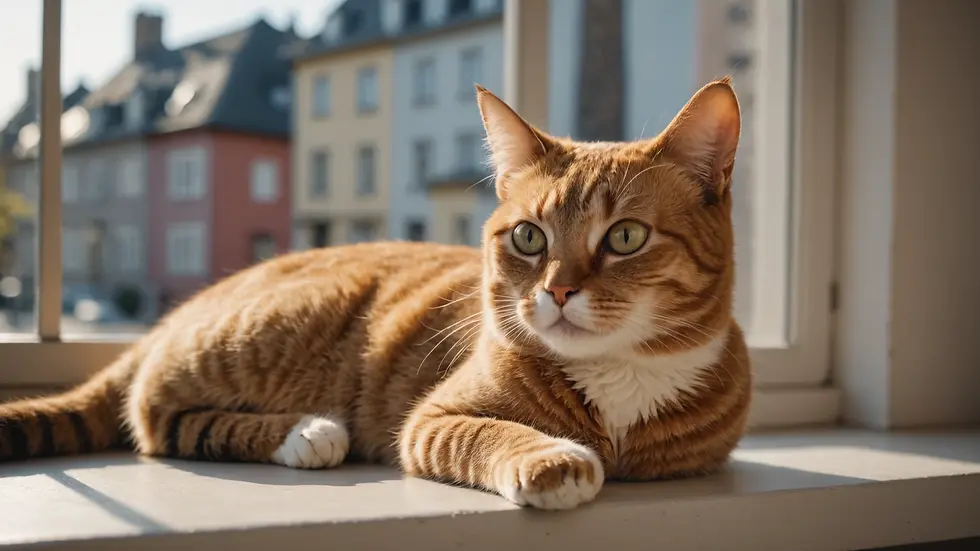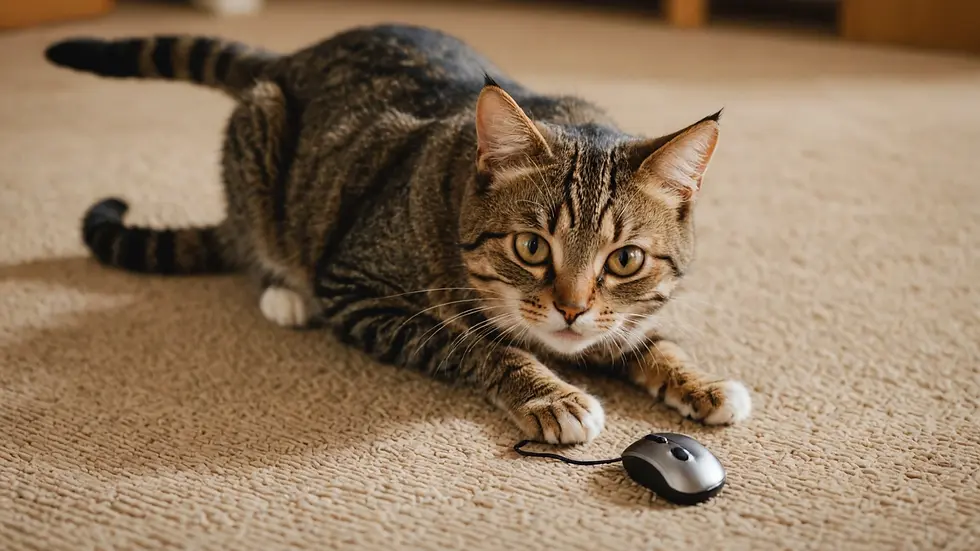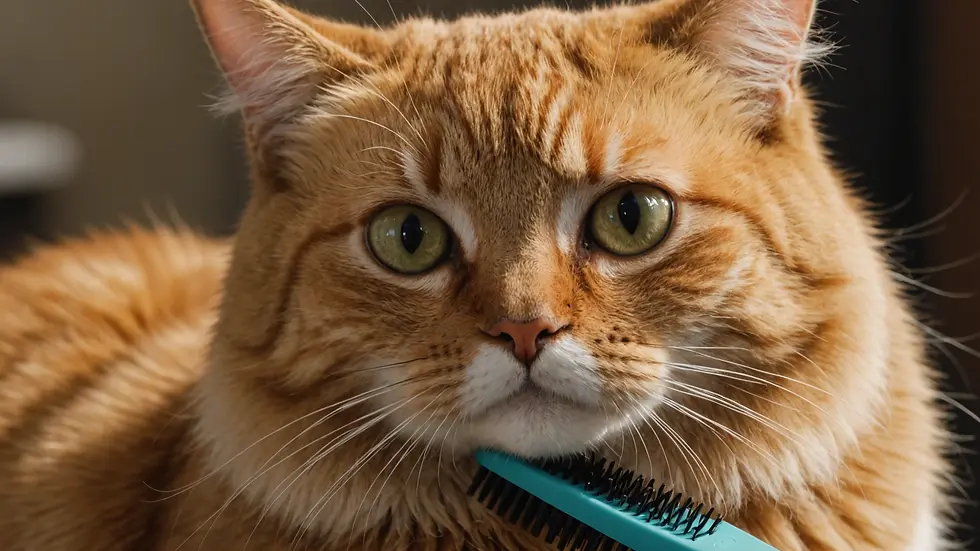Are Cats as Independent as We Think? Debunking the Myth
- Jyotiraj Borah
- Feb 5
- 4 min read
When it comes to our beloved pets, few are as misunderstood as the domestic cat. Often seen as aloof and self-sufficient, cats have developed a reputation for being low-maintenance companions. But how accurate is this view? Are they truly as independent as we think? This post aims to uncover the truths about feline independence by examining their behavior, emotional needs, and social structures.
The Myth of Cat Independence
The common belief is that cats thrive in solitude, often preferring their own company over that of humans. This perception arises from their solitary hunting nature and independent lifestyles. While dogs were bred for companionship, cats have kept many traits from their wild ancestors, supporting the idea of independence.
Yet, while cats can often manage alone longer than dogs, this view overlooks the intricate social behaviors and emotional requirements they possess.
Understanding Feline Behavior
To better understand cat independence, we need to look closer at their behaviors, which reflect a blend of self-sufficiency and attachment to their owners.
Solitary Hunters: In the wild, cats hunt on their own, contributing to their independent image. However, they are inherently social animals. For example, a 2021 study revealed that 70% of domestic cats shown in multi-pet households preferred to remain close to their human companions despite their natural hunting instincts.
Territorial Creatures: Cats instinctively establish territories, often preferring to remain on their own turf. According to research, cats can defend areas ranging from 1-4 acres, further highlighting their need for personal space.
Vocalization and Communication: While they may not be as vocal as dogs, cats use a range of sounds to express themselves. For instance, 90% of cat owners have reported that their felines will often "talk" to them when they want attention, showcasing their desire for connection.
Understanding these behaviors helps clarify what independence means for cats. They possess a complex social behavior that blends independence with an inherent need for companionship.
Emotional Needs of Cats
Often overlooked, the emotional needs of cats play a crucial role in their perceived independence. Cats might seem self-reliant, but they have deep emotional requirements that need attention.
Attachment to Humans: Research indicates that cats form strong attachments to their caregivers, similar to the bonds in child-parent relationships. In surveys, 60% of cat owners described their pets as seeking them for comfort in times of stress.
Stress and Anxiety: Cats can experience anxiety when left alone for long periods. Unlike dogs, who may bark or act destructively, cats may hide or withdraw. This behavior can be misunderstood as self-sufficiency, but it often signals distress.
Play and Engagement: Regular play and mental stimulation are vital for a cat's happiness. A study from 2019 found that cats engaged in play three times a week showed a 50% reduction in behavioral issues compared to those that did not.
While cats can be solitary creatures, they thrive best in environments that offer love, engagement, and stimulation from their humans.
Social Structures in the Feline World
The idea that cats are solitary is challenged by evidence showing they often exist in complex social structures. This is especially true when they have outdoor access to interact with other cats.
Colonial Living: In feral cat communities, colonies are common where cats live in groups. About 80% of feral cats exhibit social hierarchies, mirroring behaviors seen in social mammals.
Grooming and Bonding: Cats engage in social grooming, known as allogrooming, to strengthen their social bonds. This behavior, observed in 75% of domestic cats, shows trust and a need for companionship.
Mutual Dependencies: Cats within communities rely on one another. Socialized cats display a lower fear of humans, leading to increased trust and positive interactions.
Understanding these social structures reshapes the view of cats as solely independent creatures. They actively seek connection, even among fellow felines.
The Role of Environmental Enrichment
A cat’s environment significantly influences its perceived independence and overall well-being. An enriched setting allows them to showcase natural behaviors, reducing stress and enhancing security.
Providing Resources: Multiple feeding and resting areas can reduce competition. A household featuring multiple litter boxes can decrease stress levels, leading to happier cats.
Climbing and Scratching Opportunities: Cats naturally need to climb and scratch. Providing shelves or scratching posts can enhance their happiness and prevent boredom, paramount in a household with more than one cat.
Mental Stimulation: Interactive toys can engage a cat’s instincts. Studies suggest that cats with regular access to these toys show a 40% increase in playful behaviors, enhancing their emotional health.
By considering these environmental factors, owners can help their cats feel secure and engaged, debunking the myth that felines are merely solitary beings.
The Impact of Human Interaction
While cats may appear independent, human interaction significantly influences their mood and overall happiness.
Positive Reinforcement and Training: Cats respond to positive reinforcement effectively. A 2020 survey showed that 85% of cat owners found their pets more inclined to learn behaviors when rewarded with treats or praise.
Understanding Feline Cues: Recognizing when a cat desires affection or play is crucial for a fulfilling relationship. Responding to these needs can strengthen bonds and increase a cat’s sense of security.
Adapting to Changes: Cats are sensitive to environmental changes. Providing comfort during these transitions can alleviate anxiety, indicating their need for companionship and stability.
With attentive interaction and respect for their individuality, owners can enrich their cats' lives, showing that, while independent, cats seek care and engagement to truly thrive.
The Real Nature of Cat Independence
Ultimately, the belief that cats are entirely independent creatures oversimplifies their nature. While they can be alone, cats also need emotional support, social interaction, and an engaging environment to flourish.
Recognizing that dependence and independence coexist helps create a more rewarding experience for both cats and their guardians. For those thinking of adopting a cat or who already share their lives with one, understanding their emotional and social needs can lead to a deeper and more fulfilling bond.
So when you see your feline friend relaxing in a patch of sunlight, remember that while they may seem independent, they truly thrive on the love and engagement of their human companions. A balanced life for both cat and human centers around respect, care, and companionship, illustrating that even the most independent cat enjoys a little company.







Comments